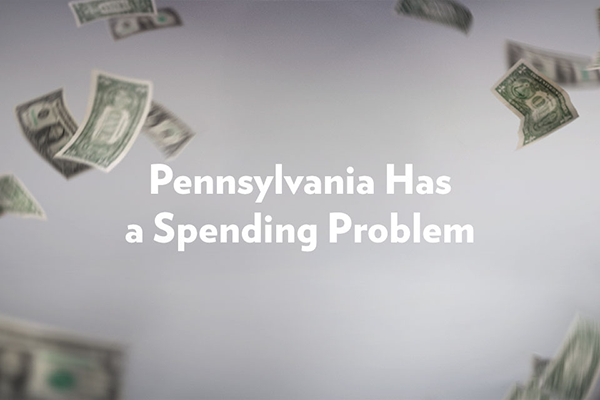What do we get for our taxes in Pennsylvania? The question is rarely asked—because the answer is just too painful. But as Tax Day approaches, it's time for taxpayers to stop covering their eyes and address head-on our nontransparent government spending and bureaucratic waste.
Finance news outlet WalletHub just published a study that throws back the curtain on every U.S. state—and results are not encouraging for Pennsylvania families.
By examining overall tax burden and the quality of services like education, roads, hospitals, and criminal justice, their “Taxpayer ROI” report places Pennsylvania a mediocre 30th place, down one slot from last year.
It’s on specific issues, though, that we fare the worst. For example, our hospitals place fifth to last—which is no surprise to Pennsylvanians. Non-emergency care facilities across the state have been closing for over a decade due to staggering losses and overspending.
And our roads are third to last in the nation. The state’s most vital piece of infrastructure, bringing millions to their jobs and errands, is falling apart. Quality transportation is the backbone of the economy. Meanwhile, our state’s gas tax—the highest in America—is devoted to fixing potholes and building bridges. So where is all this money (59 cents per gallon) hiding?
Watching tax money disappear down the hole of government spending has become a Pennsylvania pastime. Our commonwealth ranks ninth in per-student education spending, with student outcomes near the bottom in almost every category.
The solution isn't spending more, it's spending smarter.
The solution isn’t spending more, it’s spending smarter. For education, this means offering school choice. All of Pennsylvania’s education choice solutions save money compared with traditional public schools. For example, tax credit scholarships, which allow families to escape failing neighborhood schools, saved taxpayers more than $1 billion from 2002-2014.
Imagine the economic prospects if this choice-based solution were expanded.
Smarter spending is a principle that applies across Pennsylvania’s budget. If we want to get there, we need to think about commonsense limits on spending that both parties can agree with.
The Taxpayer Protection Act (TPA) offers just such a solution. By bringing spending in line with the rate of economic growth, its formula ensures that funding is available for needed services, but spending isn’t allowed to get out of control.
Through innovative policies like school choice and fiscal guardrails like the TPA, Pennsylvania can climb out of the tax-and-spend hole we’ve dug for ourselves. We’re all taxpayers—so we can’t just throw up our hands.
RELATED : TAXES & SPENDING, TAX REFORM





